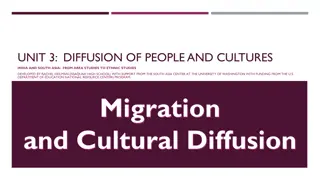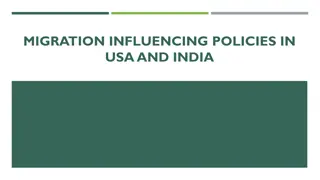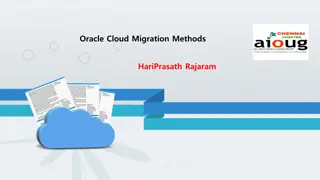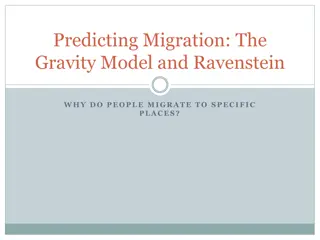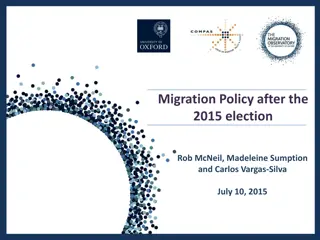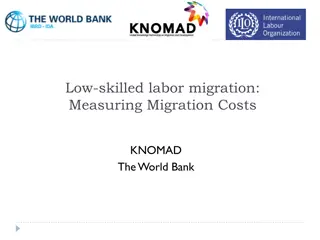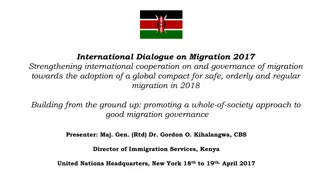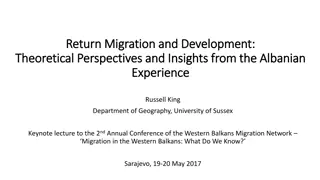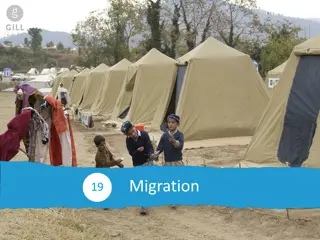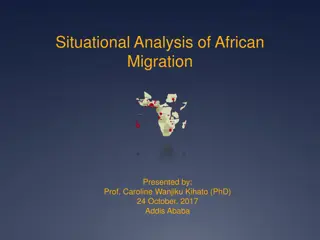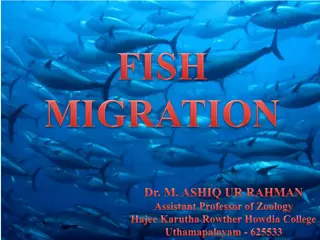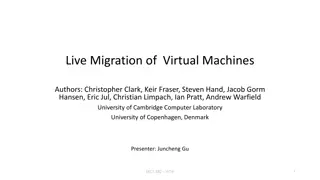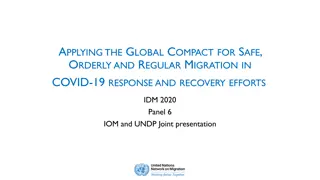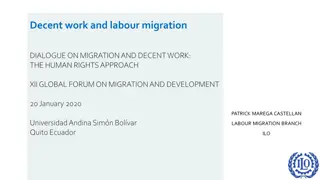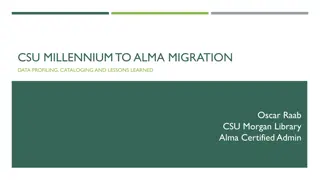Strategic Partnership for Migration in South East England
South East Strategic Partnership for Migration is dedicated to coordinating and advising on migration matters, particularly concerning unaccompanied migrant children. Legislation and guidance underpinning the NTS allow for the transfer of responsibilities for caring for such children among local authorities in England. The National Transfer Scheme ensures the equal dispersal of unaccompanied asylum-seeking children throughout England.
Download Presentation

Please find below an Image/Link to download the presentation.
The content on the website is provided AS IS for your information and personal use only. It may not be sold, licensed, or shared on other websites without obtaining consent from the author.If you encounter any issues during the download, it is possible that the publisher has removed the file from their server.
You are allowed to download the files provided on this website for personal or commercial use, subject to the condition that they are used lawfully. All files are the property of their respective owners.
The content on the website is provided AS IS for your information and personal use only. It may not be sold, licensed, or shared on other websites without obtaining consent from the author.
E N D
Presentation Transcript
South East Strategic Partnership for Migration Sarah Spain Principal Social Worker for Unaccompanied Migrant Children, South East England Councils
What is a Strategic Partnership? A Strategic Partnership provides a leadership, co- ordination and advisory function for migration. Separated and Unaccompanied Asylum Seeking Children in Scotland November 2017
There Are Nine Strategic Partnerships Across England. North East North West East Midlands West Midlands Yorkshire & Humber London South West South East
Legislation and Guidance Underpinning the NTS Part 5 of the Immigration Act 2016 contains provisions for the transfer of responsibility for unaccompanied asylum seeking and refugee children in England Section 69 creates a mechanism to transfer responsibility for caring for unaccompanied asylum seeking and refugee children from one local authority to another. Section 72 enables the Secretary of State to require local authorities to cooperate in the transfer of unaccompanied migrant children if they are unwilling to do so on a voluntary basis, by creating a scheme for the transfer of the functions of one local authority to another local authority in accordance with arrangements under section 69 and directing the relevant local authorities to comply with the scheme.
Each of the nine regions is responsible for managing the multiple asks from central government on local authorities. Syrian Vulnerable Persons Scheme Vulnerable Childrens Resettlement Scheme UASC including Dubs & NTS cases
What is my role? I Co-ordinate the dispersal of UASC via the NTS for the South East of England Working together with all 19 LA s in the South East to identify and overcome pressures/barriers to engagement in the scheme. Working across all agencies voluntary and statutory to support engagement.
So What is the National Transfer Scheme? What - The National Transfer Scheme (NTS) is the conduit by which the government ensures the equal dispersal of unaccompanied asylum seeking children throughout England. When - It was created and introduced on 1stJuly 2016 to enable the safe transfer of unaccompanied children from one UK local authority to another. Why - In response to the increasing pressures on port authorities who were managing disproportionate numbers of unaccompanied children to ensure those children s needs are met.
How Does it Work? Based on 0.07% UASC to entire child population. The percentage of 0.07% is not a target but is used to indicate when a local authority has reached the point where they would not be expected to receive any more unaccompanied children Children arriving in LA s over the 0.07% threshold can be transferred in region to another LA below threshold. If the entire region is over 0.07% a child can be transferred out of region . https://www.gov.uk/government/uploads/system/uploads/at tachment_data/file/534258/Interim_National_UASC_transfer _protocol.pdf
Process for Transfer Completion of a Unique Unaccompanied Child Record Part A reception information Part B transfer request Part C transfer allocation Part D transfer acceptance Part E LAC status update e.g. notification of missing, age determined as over 18yrs or reunification with responsible adult.
Home Office Central Team Provides the central government function for processing requests and transfers. Dubs arrivals Vulnerable Children s Resettlement Scheme Dublin III (breakdowns)
Some of Difficulties Engagement is voluntary Central team are not Social Workers and do not screen UUCR s Incomplete information on UUCR s e.g. child trafficking indicators; family members in UK Funding deficit Responsibility of receiving LA to undertake age assessment and arrange for transportation of the child. Delay in request for transfer and child not wishing to move
Data 550 children have been transferred since the scheme began East Midlands 49 East of England 140 London 5 North East 23 North West 52 South East 86 South West 87 West Midlands 38 Yorkshire and Humber 54
Local Authority Barriers to Engagement and What Can be Done to Overcome Them.
Work Undertaken to Overcome The Barriers Single point of contact for LA s Regional training program Quarterly regional practice leads meetings Sharing of good practice Shared resources Information sharing protocol Funding review Contributing to improvement strategies e.g. fostering stocktake CMF bid
South East Strategic Partnership for Migration Thanks for listening




